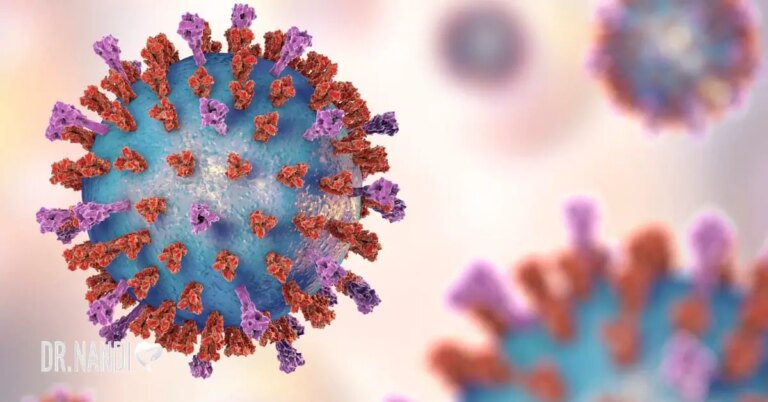Imagine a seemingly innocent fish, a staple on dinner plates worldwide, harboring a hidden secret that could make even the most dedicated seafood enthusiasts pause. Beyond its mild flavor and affordability lies a concealed truth – tilapia often contains elevated levels of dioxin, a stealthy toxic chemical that has infiltrated our food chain unnoticed. Let’s unravel the unsettling reality of tilapia and its alarming dioxin content, raising critical questions about the potential health risks associated with this commonly enjoyed fish. We’ll explore the multifaceted world of tilapia, the insidious nature of dioxin, and a guide for making informed choices in your seafood consumption journey. Welcome to the truth about tilapia – a silent threat to your seafood diet.
What Is Tilapia?
Tilapia, the “aquatic chicken” of seafood, is renowned for its mild flavor, affordability, and versatility in cooking. This freshwater fish has carved a special place on dinner tables worldwide, appreciated not only for its culinary appeal but also for its economic accessibility. It has become a global commodity, ranking among the most farmed fish globally. Tilapia comes in various species, including Oreochromis niloticus (Nile tilapia), Oreochromis aureus (Blue tilapia), Oreochromis mossambicus (Mozambique tilapia), Oreochromis urolepis hornorum (Wami tilapia), Sarotherodon melanotheron (Black-chinned tilapia), and hybrids.

What Is Dioxin?
Dioxin, though abstract-sounding, is a highly toxic chemical compound found in some tilapia. It belongs to a family of compounds, with 2,3,7,8-tetrachlorodibenzo-p-dioxin (TCDD) being the most infamous due to its extreme toxicity. Dioxins enter our environment through various human activities, such as industrial processes and waste incineration, ultimately accumulating in the fatty tissues of animals and entering the food chain.1
Dioxin exposure carries serious health risks, including cancer (lung, breast, liver, and prostate), weakened immune systems, hormonal disruptions, skin disorders, liver damage, and even psychological disorders. This toxic chemical disrupts normal cellular processes, leading to uncontrolled cell growth and immune system impairments.
Dioxin in Tilapia
Surprisingly, research has consistently shown alarmingly high levels of dioxin in tilapia, raising concerns about its safety as a commonly consumed fish. Pollution in water sources and contaminated diets are potential sources of dioxin in tilapia.2
Consuming tilapia with elevated dioxin levels can expose individuals to health risks, including cancer and other toxic effects, which is especially concerning given its popularity as an affordable protein source.
In an age where food choices significantly impact our health, consumer awareness regarding dioxin levels in tilapia is essential. Understanding the potential presence of this hidden threat is a matter of personal safety. To make informed choices when buying seafood, people can read labels and research sources, consult seafood guides, support sustainable practices, and diversify their seafood choices.
Farm-Raised Tilapia vs. Wild Tilapia
The choice between farm-raised and wild-caught tilapia is an important consideration for health and sustainability. Both options have their merits, but understanding the differences is crucial for making informed choices.
Farm-Raised Tilapia:
Farm-raised tilapia is readily available, affordable, and a significant source of protein. These fish are raised in controlled environments, allowing for monitoring of variables like water quality and diet. However, there are concerns to consider, especially regarding dioxin levels due to potential contamination in their feed and water sources. Additionally, farm-raised tilapia may have lower levels of beneficial omega-3 fatty acids compared to their wild counterparts.
Wild Tilapia:
Wild-caught tilapia is harvested from natural ecosystems like lakes, rivers, and seas. These fish have diets influenced by their natural environment, which can result in certain health benefits. They often have a more varied diet, potentially offering a more diverse nutrient profile, including higher levels of omega-3 fatty acids. Furthermore, wild-caught tilapia may have lower dioxin levels compared to farm-raised ones.

Farm-Raised vs. Wild Tilapia: Which One Is The Healthier Choice?
Regarding health, wild-caught tilapia has an advantage due to its diverse diet and potentially lower dioxin contamination. However, both farm-raised and wild-caught tilapia can be part of a healthy diet when sourced from reputable suppliers and prepared in a nutritious manner.
The healthiest choice depends on individual dietary preferences, availability, and contaminant concerns. A balanced seafood consumption approach that includes farm-raised and wild-caught options can minimize potential health risks while offering variety and nutrition.
Alternatives to Tilapia
Given the concerns about dioxin levels in tilapia, exploring alternative fish options with lower contamination risk is essential for those seeking a healthier seafood diet. Several fish species have gained recognition for their relatively lower dioxin levels and are excellent substitutes for tilapia:
- Salmon: Wild-caught salmon, mainly, is renowned for its high omega-3 fatty acid content and lower dioxin levels. It’s flavorful and nutritious, making it a top choice for seafood lovers.
- Sardines: Sardines are rich in omega-3s and typically have fewer contaminants. They are available both fresh and canned, providing a convenient and healthy choice.
- Mackerel: Known for its omega-3 content and lower risk of dioxin contamination, mackerel is versatile for grilling, baking, or pan-frying.
- Trout: Rainbow and brook trout are often found in cleaner freshwater environments, contributing to their lower dioxin levels. They offer a mild, delicate flavor.
- Arctic Char: This cold-water fish, closely related to salmon, offers similar health benefits with reduced dioxin concerns.
Signs and Symptoms of Fish Contamination
While seafood is generally nutritious, knowing about potential fish contamination and its associated health risks is essential. Here are some common signs and symptoms to watch for:
- Unusual Odor: Fish with a strong, unpleasant smell, even after cooking, may indicate spoilage or contamination.
- Visible Mould or Discoloration: Mold or unusual discoloration on the fish’s skin or flesh clearly indicates that it’s unsafe for consumption.
- Physical Illness After Consumption: Symptoms like nausea, vomiting, diarrhea, or stomach cramps after eating fish may indicate contamination or foodborne illness.
- Persistent Changes in Health: Long-term consumption of contaminated fish can lead to chronic health issues such as mercury poisoning or heavy metal accumulation.
If you experience any of these signs or symptoms, it’s advisable to avoid consuming fish from the same source and seek medical advice if necessary.
Making Informed Choices for a Healthier Future
When it comes to seafood, making informed choices is paramount for your well-being. While tilapia remains popular for its affordability and taste, awareness of its potential dioxin content is crucial. To ensure a healthier future for yourself and the environment, consider these steps:
- Choose Wisely: Opt for wild-caught tilapia or explore alternative fish species with lower contamination risk. Prioritize your health by making conscious decisions about the seafood you consume.
- Source Matters: Pay attention to the source of your seafood. Look for suppliers that adhere to stringent quality and safety standards in aquaculture or fishing. Reliable sources are more likely to provide safer seafood options.
- Sustainability is Key: Support sustainable practices in seafood production. Sustainable sources tend to be more mindful of contaminants like dioxin and prioritize the health of the oceans.
- Variety is Healthy: While tilapia is convenient and affordable, consider diversifying your seafood choices. There are numerous other fish options available that offer a wider range of flavors and nutritional benefits.
- Be Vigilant: Watch for signs of fish contamination, such as unusual odor, visible mold, or physical illness after consumption. Your vigilance can protect you from potential health risks.
- Consult Experts: If you’re unsure about the safety of a particular fish or its source, don’t hesitate to consult experts or seafood guides that provide information on sustainable and safe choices.
By following these steps and making informed choices, you can enjoy a seafood diet that not only benefits your health but also contributes to the well-being of our oceans and ecosystems.
Tilapia, once hailed as an affordable and versatile protein source, carries a hidden danger in the form of dioxin contamination. While it remains a popular choice, the presence of dioxin raises serious concerns about its safety. By understanding the risks associated with tilapia and making informed choices, you can protect your health and support sustainable seafood practices. Remember that your choices as a consumer can make a significant difference, ensuring a healthier and safer future for both yourself and the environment.
My Personal RX on Making Smarter Diet Choices
As a doctor, I’m committed to helping you make informed choices for a healthier lifestyle. Here are some tips to navigate the potential risks of dioxin in tilapia while still enjoying seafood:
- Prioritize Wild-Caught Fish: Opt for wild-caught tilapia or other fish species with lower dioxin contamination for a safer seafood choice.
- Read Labels: Pay close attention to packaging labels for information about the source and quality of the fish you’re purchasing.
- Omega-3 Fish Oil: Supplement your diet with my Omega-3 Fish Oil. It supports holistic heart health and aids cognitive function, helping you make better dietary decisions.
- Diversify Your Seafood Choices: Explore various fish options to minimize potential health risks and enjoy different flavors.
- Sustainable Seafood Guides: Consult reputable seafood guides for information on sustainable and safe seafood choices, ensuring a healthier and environmentally friendly diet.
- Support Sustainable Practices: Choose seafood from sources known for adhering to stringent quality and safety standards, promoting both your health and sustainable fishing practices.
- Superfoods Cookbook: Consider using my Superfoods Cookbook to incorporate wholesome recipes that integrate superfoods, enhancing your overall nutrition.
- Stay Vigilant: Keep an eye out for signs of fish contamination, like unusual odor or visible mold, to ensure your seafood is safe to consume.
- Variety Is Key: To maintain a balanced and nutritious diet, explore various seafood options, including those rich in omega-3 fatty acids.
- Consult with Experts: If you have doubts about the safety of a particular fish or its source, feel free to seek advice from nutrition experts or healthcare professionals who can guide you in making the best dietary choices.
Remember, your health is a priority, and these tips can help you make informed decisions about seafood consumption, ensuring a healthier and safer future.
Sources:
- World Health Organization: WHO. (2023, November 29). Dioxins. https://www.who.int/news-room/fact-sheets/detail/dioxins-and-their-effects-on-human-health ↩︎
- Ahmed, M., Abdel-Rahman, G. N., Ali, M. E., Saleh, E. M., Morsy, O. M., Elgohary, M. R., Saad, M. M., & Awad, Y. M. (2023). Potential health risk assessment for heavy metals in Tilapia fish of different spatiotemporal monitoring patterns in Kafr El-Shaikh and El-Faiyum Governorates of Egypt. Toxicol Rep, 10, 487–497. https://doi.org/10.1016/j.toxrep.2023.04.004 ↩︎












 Subscribe to Ask Dr. Nandi YouTube Channel
Subscribe to Ask Dr. Nandi YouTube Channel










